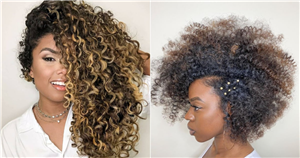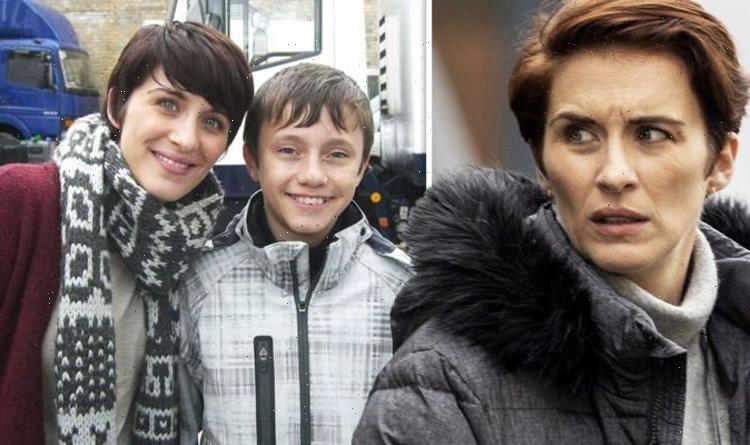https://www.instagram.com/p/B8y9dTbFqDf/
If you’ve ever considered coloring your hair, there’s a good chance you’ve heard of balayage. For the uninitiated, balayage isn’t so much a hair color as it is a coloring technique in which a stylist applies color in a sweeping motion — the word itself is French and translates to “to sweep” or “to paint” — in order to gradually lighten the hair and give it a natural-looking, sun-kissed finish. The technique has been wildly popular on social media for several years now, but there’s a slightly new coloring style that’s been all over our Instagram feeds for the last few months: “curlyage.”
Coined by Jamal Edmonds, colorist and expert for Redken and Mizani, curlyage is a slight tweak on the balayage technique, except this version is customized specially for people with curly or textured hair.
“You have to be mindful that the light will reflect differently on straight hair versus textured hair, which makes customized placement of the lightener so important,” he told POPSUGAR. “Curlyage and balayage are similar in the sense that you are painting lightener onto the hair in both technique scenarios, but curlyage is different because of the customized placement and focus on protecting the integrity of the curls.”
According to Edmonds, there are three factors to consider for curly-haired clients who request the curlyage technique: the density of their hair, its porosity, and its elasticity.
“These three factors shape where I place the highlights, how I formulate the lightener, and what level of developer or ‘lift’ I use for the lightener formula,” Edmonds said. “My rule of thumb when lightening textured hair is to use a low developer and lift slowly.” This approach ensures that the hair is safely colored without potentially damaging the curl pattern and that the lightened hair will still look good straightened or curly.
For a better understanding of curlyage and what it looks like, take a look at the photos ahead.
Source: Read Full Article


